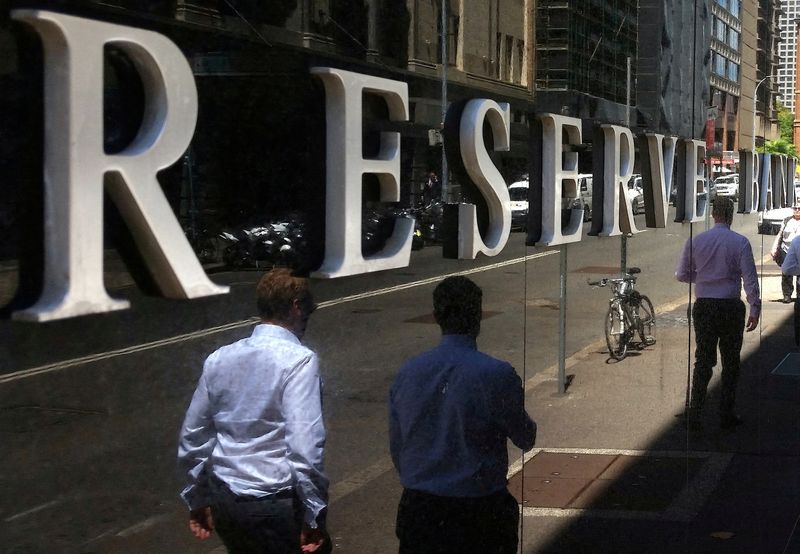RBA to take foot off rate hike pedal
2023.04.03 18:15

© Reuters. FILE PHOTO: Pedestrians walk past the Reserve Bank of Australia building in central Sydney, Australia, February 10, 2017. REUTERS/Steven Saphore
By Jamie McGeever
(Reuters) – A look at the day ahead in Asian markets from Jamie McGeever.
Australia’s central bank takes center stage on Tuesday with its latest interest rate decision, and beyond that, if the second trading day of the quarter is as eventful as the first, then investors’ plates will be extra full.
Oil prices posted the biggest rise in a year on Monday following a surprise output cut from OPEC+ over the weekend, a slump in U.S. bond yields in the wake of recession-level manufacturing sector data and a steep slide in Tesla (NASDAQ:) shares after sluggish sales growth figures.
Wall Street took the ‘bad news is good news’ position on that, however: lower yields and implied interest rates, coupled with buoyant energy stocks, ensured the Dow and closed in the green – the Dow rising 1%.
Tesla’s 6% slump dragged the Nasdaq into the red, but the broader index’s decline was still only 0.27%.
Not only did U.S. manufacturing activity in March shrink at its fastest pace in nearly three years, all components of the Institute for Supply Management’s survey fell below the 50 growth/contraction threshold for the first time since 2009.
The renewed fall in U.S. Treasury yields – they fell five to ten basis points across the curve on Monday – continued to weigh on the dollar.
The biggest gainer on the greenback was the Australian dollar – up 1.5% for its best day in three months – ahead of the Reserve Bank of Australia’s policy decision on Tuesday.
Graphic: Australian dollar – daily change –
Graphic: Australian interest rates and inflation –
Interest rate futures markets are attaching a near-90% probability to policymakers keeping the benchmark cash rate unchanged at 3.60%, putting the year-long hiking cycle on hold at least for now.
Economists polled by Reuters are not quite as convinced – 21 of 37 are forecasting a 25 basis point increase to 3.85%, and the remaining 14 are going for a pause.
Elsewhere in Asia on Tuesday, South Korea releases inflation figures for March. Economists polled by Reuters expect monthly and annual inflation rates to slow.
Japan’s monetary base has exploded beyond all recognition in recent years thanks to significant monetary stimulus and injections of liquidity into the financial system from the Bank of Japan, so the monthly figures rarely draw much attention.
That might change with the March numbers on Tuesday though, in light of U.S. figures last week that showed U.S. money supply falling at its fastest rate since the 1930s.
Japan’s monetary base has actually been shrinking every month since September, on a year-on-year basis.
Here are three key developments that could provide more direction to markets on Tuesday:
– Australia interest rate decision
– South Korea inflation (March)
– Japan monetary base (March)
(By Jamie McGeever; Editing by Josie Kao)








